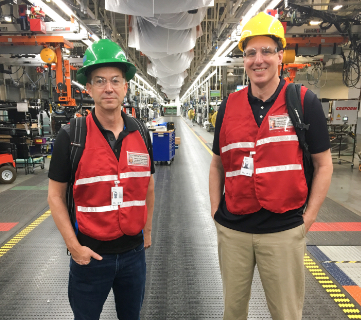LED Lifespan
A guide to understanding how long LED lamps and fixtures actually last
The Department of Energy published a report on LED failure that, among other things, found the lifetime claims for more than half of LED products to be inaccurate, or miscalculated.
Are manufacturers manipulating their claims, or are there other pieces to the puzzle?
While we frequently stress the importance of vetting manufacturers, and manufacturer reps, a lot of bad information comes down to the lighting industry adjusting to new lighting technology. This article is intended to make the technicalities behind these inaccuracies understandable, so that you can effectively avoid the risk of getting left with early failures or poor light quality from LEDs.
Differences in life expectancy between LED and traditional light sources
LED life ratings have to be measured differently than traditional lighting sources, because the technology is much different. A big takeaway from the DOE's LED failure report is this: look at lumen maintenance and L70, not just average rated life, when purchasing LED light sources.
These technical distinctions are important, so let's review to define what this means.
Average Rated Life
An average rated life, in hours, indicates when 50 percent of a large group of lamps has failed (operated at nominal lamp voltage and current). Manufacturers use three hours per start for fluorescent lamps and 10 hours per start for HID lamps when performing lamp life testing procedures. Every lamp type has a unique mortality curve that depicts its average rated life.
This is the metric for measuring the life expectancy of traditional light sources. LED light sources, however, follow a different method for measuring life expectancy called lumen maintenance.
Lumen Maintenance
Lumen maintenance is an approach for measuring the light output (lumens) of a new light source and comparing that with its light output after a certain period of time. L70 and L50 are examples of lumen maintenance measurements – benchmarks for when 70 or 50 percent of a lamp or fixture's total light output remains.
L70 Explained
In 2011, LEDs Magazine published an article on L70 and lumen maintenance. In it, they explain:
Rated lumen-maintenance life is measured in hours with associated percentage of light output. In other words, L70 of 30,000 hours means that the tested LEDs produce 70% of the initial light output at 30,000 hours. If an LED has L50 of 30,000 hours, its lumen output decays faster than one with L70 of 30,000 hours.
The way we think about LED lifespan ought to be totally different than the way we've traditionally thought about the lifespans of filament-based lighting products.
For many years, we've been replacing light bulbs after they burn out. One day, we walk in a room and flip a switch, and there's either a flash, or the light simply won't turn on. But LEDs can exist on a kind of life support for some time after their point of optimal usefulness, so we have to look for a different sign to know when to replace them.
There's potentially a significant difference between the light output of a brand new LED lamp and that of a 40,000-hour-old one. Additionally, LEDs still run the risk of failing completely – known as catastrophic failure – because of their dependency on a variety of additional electronic components. This makes buying lighting more complex than it used to be.
Here's how an excerpt from the DOE's report explains the issue of dealing with LEDs that gradually lose light output:
The end of life for all lighting technologies is signaled by the loss of light, but this may be less evident for LED luminaires, where the light output may continuously fade or the color may slowly shift to the point where low light output or an unacceptably large color change constitutes practical failure.
How long can you expect LED light sources to last?
Maybe a more appropriate question: how long can you except LED light sources to function effectively? That's the way the DOE is guiding people to look at it.
After you've hit a product's L70 mark, your lighting application comes into play. It may not a big deal for the lighting to be slightly dimmer, or slightly shift in color, if it's for a general ambient light source. But if you run a multiple locations of a critical industrial manufacturing operation or a chain of retail stores, a noticeable loss in light output or shift in color can absolutely be a problem.
Buy from a reputable source that stands behind their LED products
So in picking out your light source, be sure to find a reputable and established lighting company because you know who to track down if a product doesn’t meet its L70 mark. You know you’ll receive the support you need -- that you have someone you can call or email and they will get back to you. They’ll stand behind their warranty.




